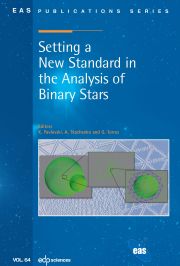No CrossRef data available.
Article contents
Young stellar flares and meteoritic isotopic anomalies
Published online by Cambridge University Press: 17 November 2003
Abstract
A long-standing enigma in planetary science has been the presence ofdaughter products of radioactive isotopes with short (τ ~ 106 yr) lifetimes. Some models are based on the injection of freshlysynthesized nuclides from stellar sources (e.g. a supernova remnant)into the molecular cloud from which the solar system formed. Othermodels produce these radionuclides within the disk via spallation byhigh fluences of MeV baryons. We report here the first quantitativemeasure of magnetic reconnection flaring in Myr-old analogs of theearly Sun from Chandra X-ray Observatory observations of the OrionNebula Cluster. We show that virtually all analogs of the ≤1Myr Sun exhibit X-ray flares that are ~30 times more powerful and~300 times more frequent than the most powerful flares seen onthe contemporary Sun. We infer that the proton fluence of the earlySun was 105 times that seen today, and argue that these protons mayplausibly have bombarded solids in the protoplanetary disk. Othershave demonstrated that such particle fluences are sufficient to produceseveral of the most troublesome excesses of short-lived CAI isotopesvia spallation of normal nebular material. Our results thus strengthenthe astronomical foundation for local irradiation models of meteoriticshort-lived isotopic anomalies. This work is described in detail byFeigelson et al. (2002b).
- Type
- Research Article
- Information
- Copyright
- © EAS, EDP Sciences, 2003


